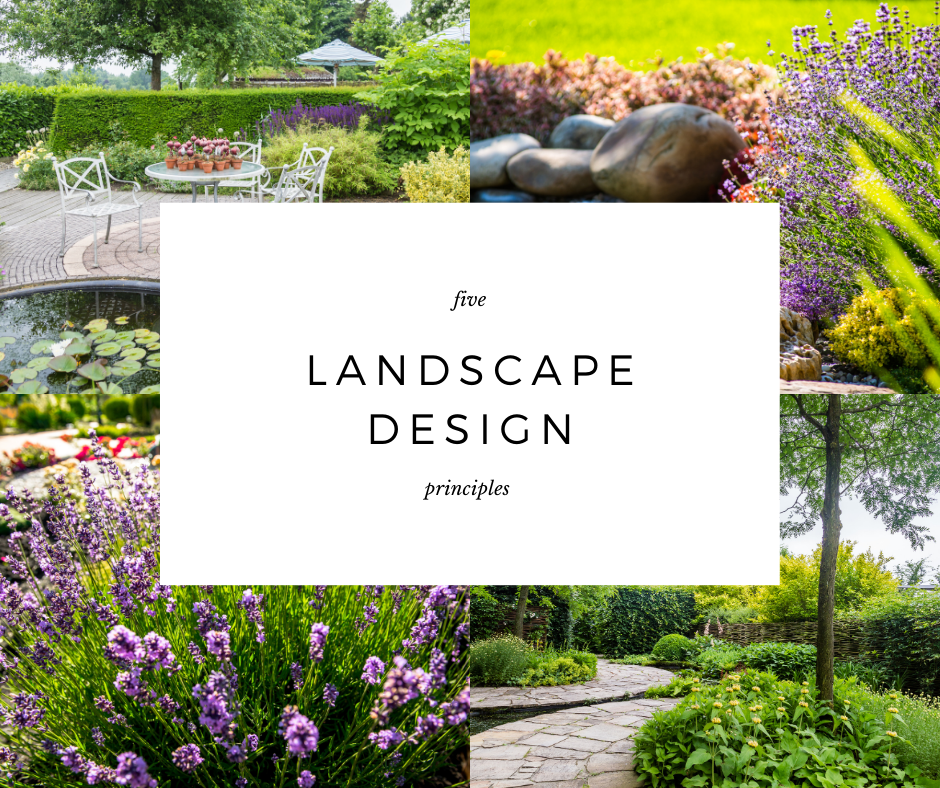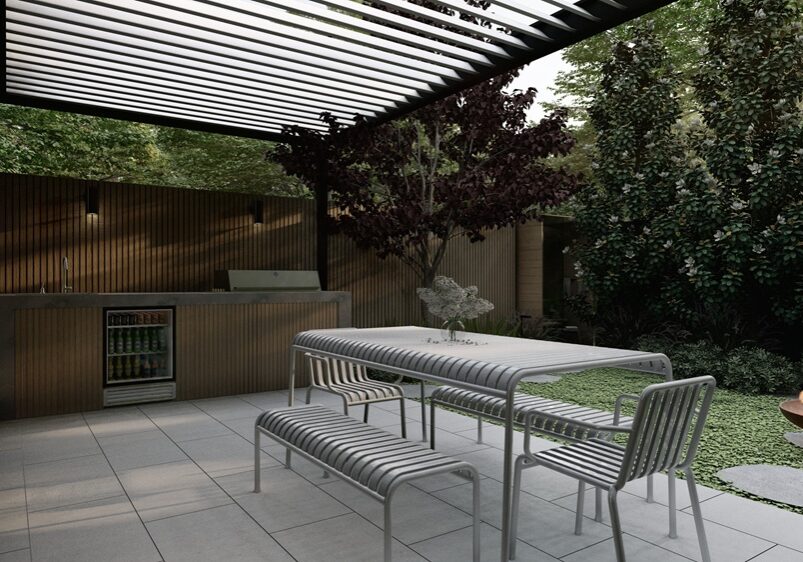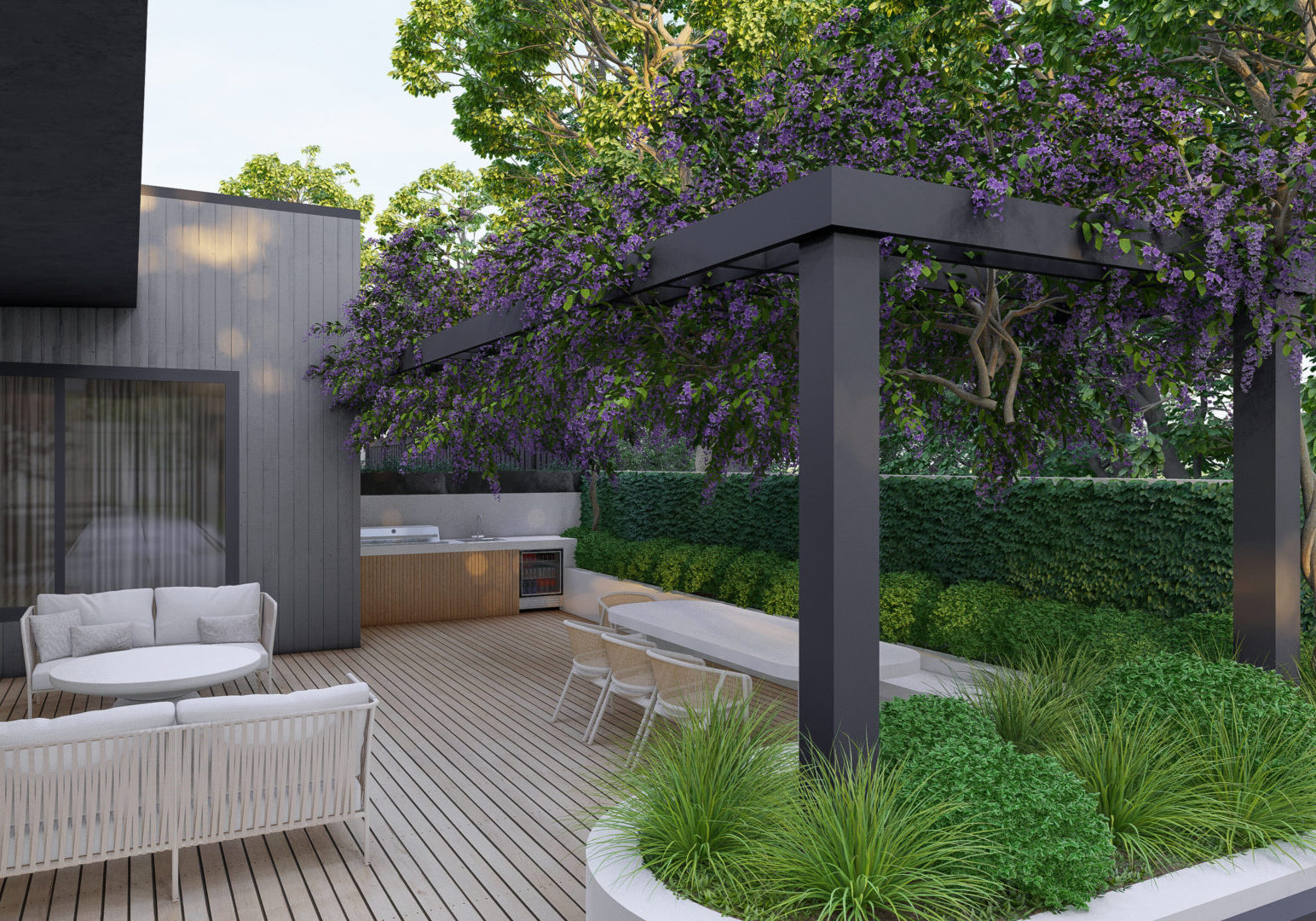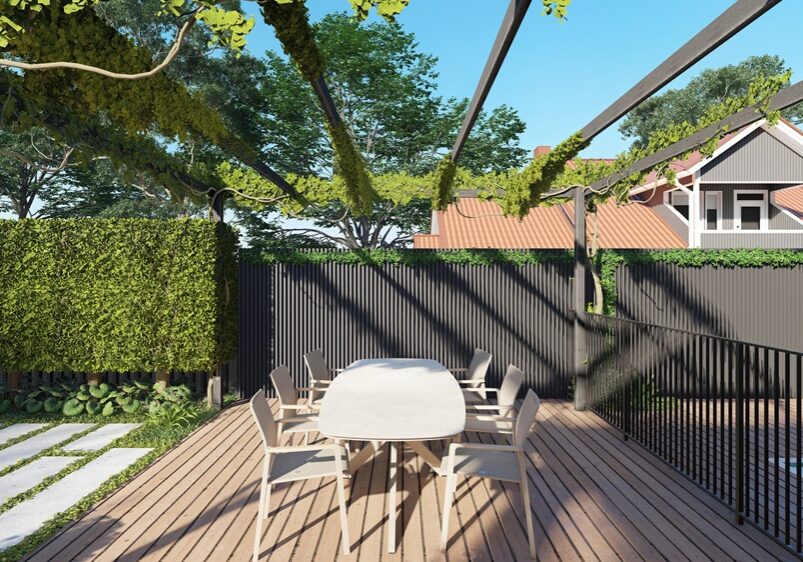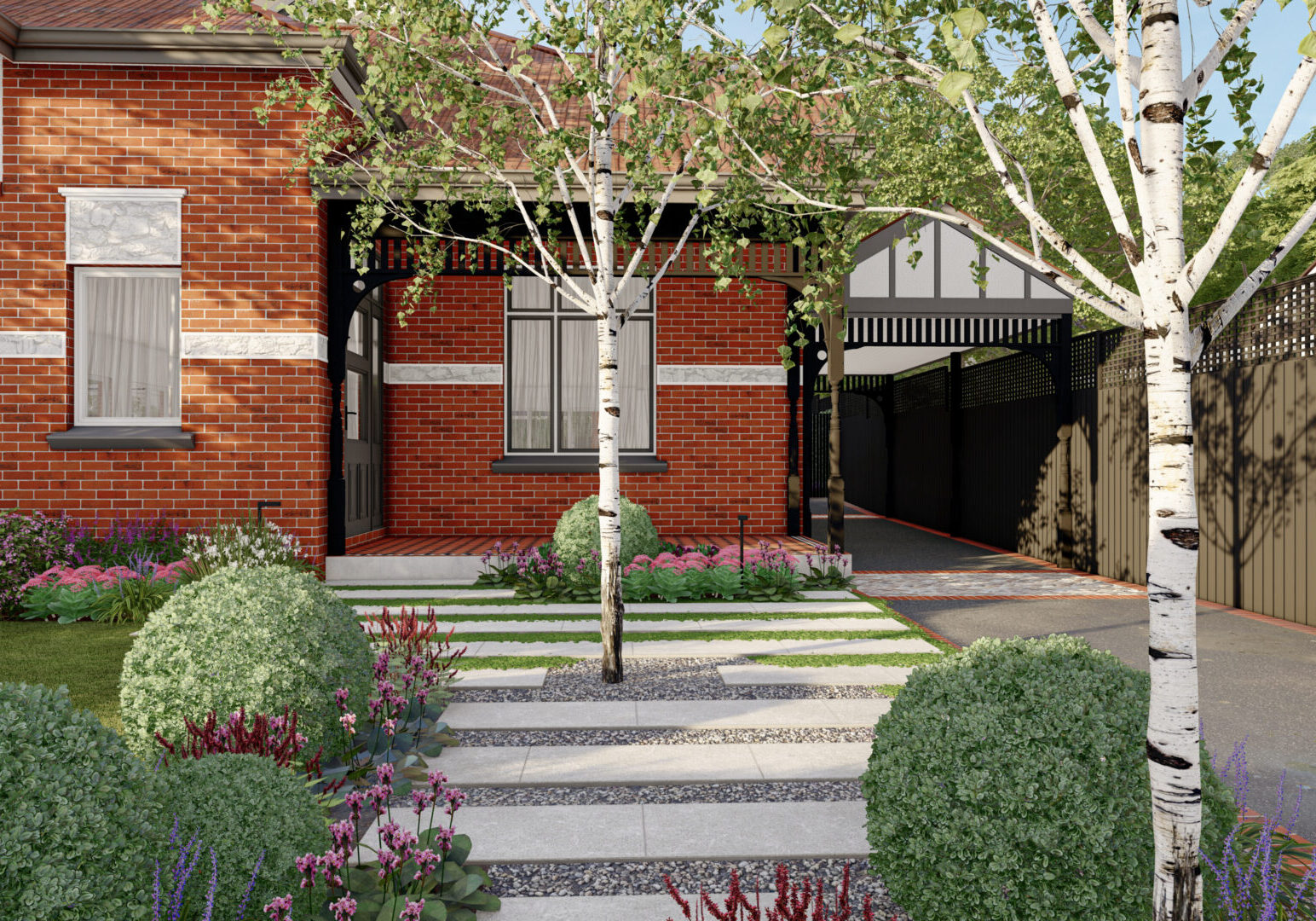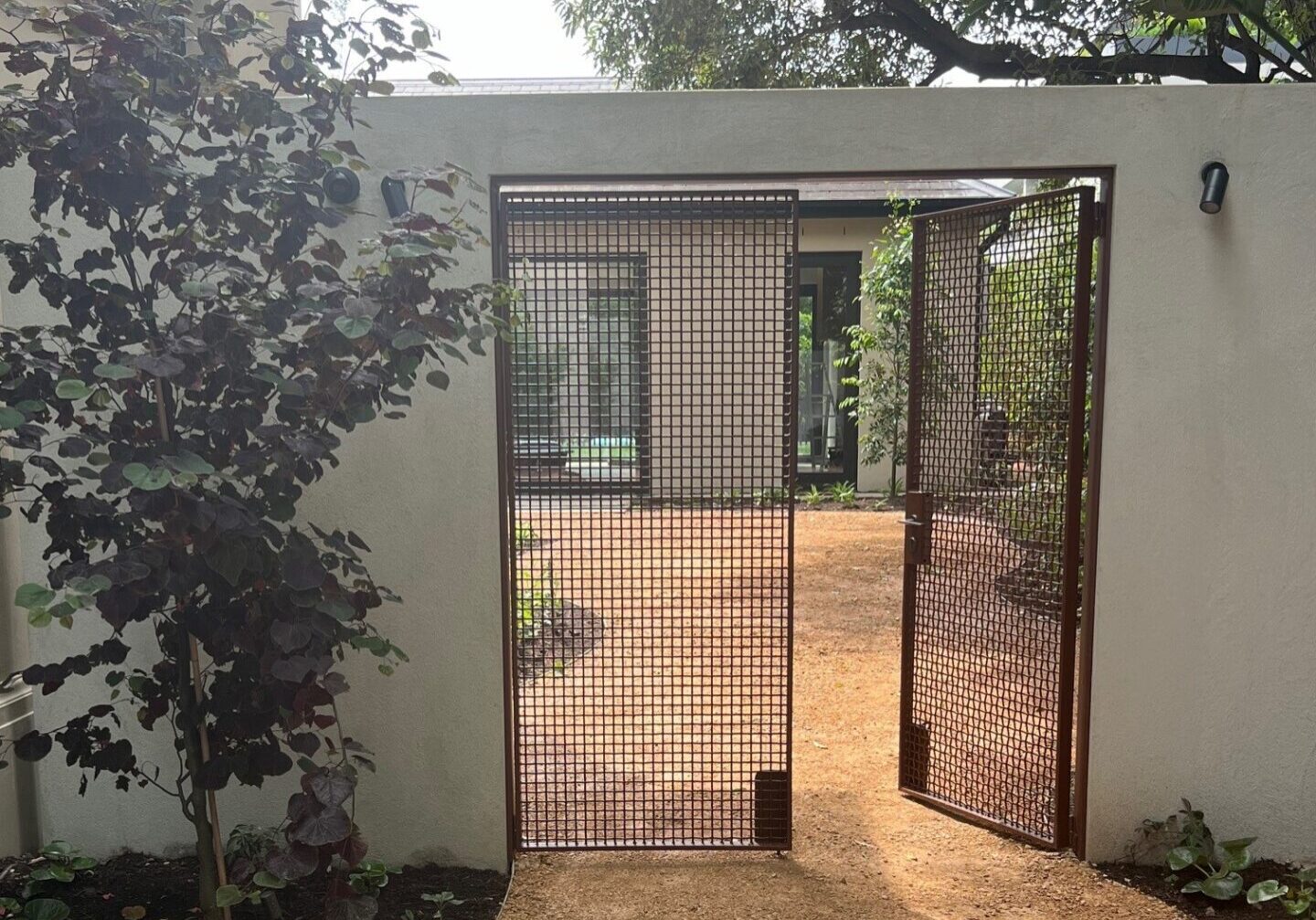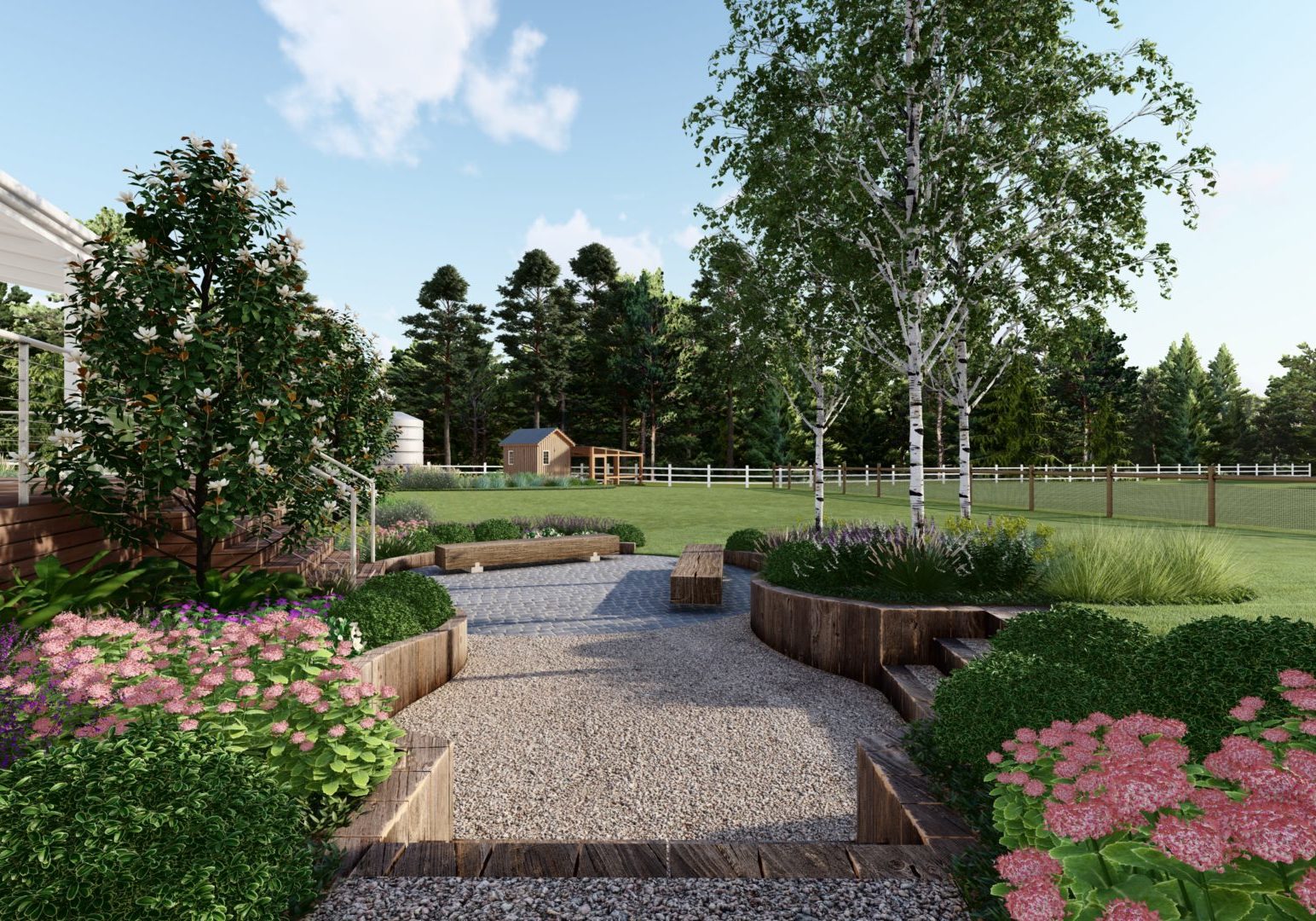5 Landscape Design Principles To Guide Your Garden January 1, 2022
Designers often consider the four design principles to be order, proportion,
repetition, transition and unity, with emphasis placed on cohesion and visual interest.
Whether the sprawling gardens of an expansive estate or the small space backyard of a
single family home, green spaces have the potential to transform an entire property. By
following these four landscape design principles, homeowners and professional landscapers
alike can create beautiful spaces that balance creativity and tradition. Follow below to learn
more about these basic tenets of landscape design and how to apply them to your own
space.
The Five Basic Principles of Landscape Design

#1 Order and Focal Point
A well-designed garden will be orderly while also offering the viewer a primary focal point.
Order is important when designing the garden of a home because it prevents the space from
feeling messy or frenetic. It also provides the space with a sense of balance and can aid the
homeowner in his or her care of the garden, ensuring that each plant is where one
remembers it to be. Establishing a focal point for the garden is significant too, as this primary
viewpoint draws the eye through the space.

#2 Proportion
Paying proper attention to proportion when choosing each landscaping element — from
outdoor sculptures to a whole range of plants — ensures your garden feels intentional rather
than haphazard. Kelly Roberson explains this in her article “7 Landscape Design Tips for
Beginners to Help Make Your Garden Dreams Come True” for Better Homes & Gardens.
Roberson writes that “it’s the trickiest principle in landscape design for beginners, but scale
and pacing give your yard a pulled-together look.” Without enough “variations in size, shape,
and colour,” your space might fall flat — or worse — appear overdone. Quoting Marianne
Lipanovich — the author of the Big Book of Garden Designs –, Roberson writes that order
and repetition are needed in a garden “‘but you also don’t want it to be monotonous.'”
Focusing on balancing new and old elements as well as tall and short, wide and shallow and
fine and thick pieces will add much-needed weight and juxtaposition.

#3 Repetition
While the term repetition might conjure images of monotony and unconscionable sameness,
carrying the same textural, tonal or thematic elements throughout a garden can aid its
effectiveness. Horticulturist and instructor Marcy Stewart-Pyziak explains in her article
“Repetition an important part of a well-designed garden” for The Daily Journal.
Stewart-Pyziak writes that “by duplicating a plant or group of plants in the same border
and/or in different borders within the landscape, you allow that plant to have more impact
and simplify its overall effect.” Rather than risking a boring garden, repetition “helps move
our eyes through the design by providing something familiar to look at.”

#4 Transition
Gardens often feature a number of “activity zones,” many of which can translate to
“emotional zones.” For instance, the sectional by the fire pit could be an entertaining zone —
intended for social events. The barbecue could be the dining zone — intended for quiet
nights with one’s spouse. Alternatively, raised bed gardens and a gazebo could signal
personal reflective time. Because backyard gardens serve so many purposes, transition is
very much needed. Writer David Beaulieu explains this in his article “Landscape Design for
Beginners” for The Spruce. David Beaulieu writes that transition and proportion are two
sides of the same coin. He notes that a “garden design that is out of proportion is one that is
marred by abrupt transitions or by the lack of transition.” For example — Beaulieu explains –,
“a five-foot-high stone wall might elegantly set off a large home but would make a small
home look all the smaller.” Gradual change between design elements are necessary to
ensure the space flows well and feels comfortable rather than jarring or upsetting.

#5 Unity or Cohesion
Unity — or cohesion — is the result of adequate contrast, appropriate proportions and
seamless transitions. As Cindy Meredith explains in her article “7 Landscape Design
Principles Every Gardener Must Know” for The Herb Cottage, “everything about your project
should give people observing it a feeling of unity,” e.g. it “should create harmony everywhere
around you.” Each element of your garden — from the trees and bushes to the grasses and
flowers — “are supposed to complement one another and create one theme.” Consider
organising your garden tonally or texturally to establish unity throughout.
